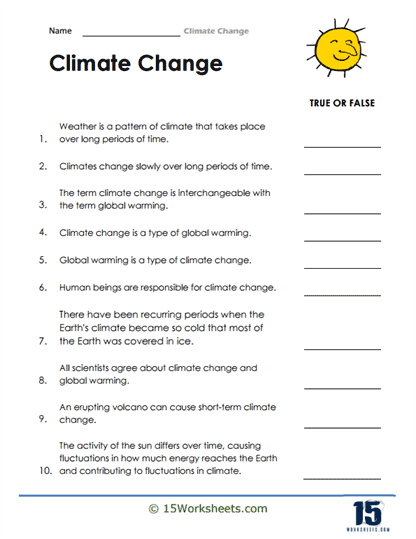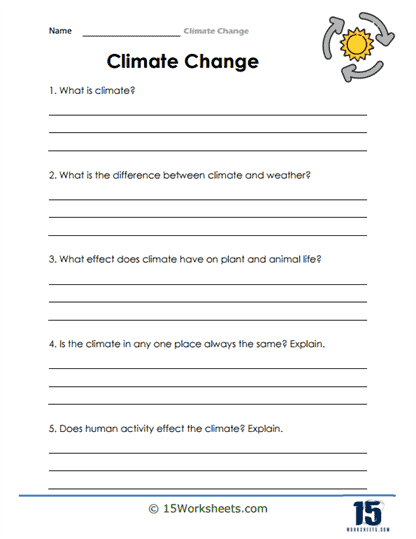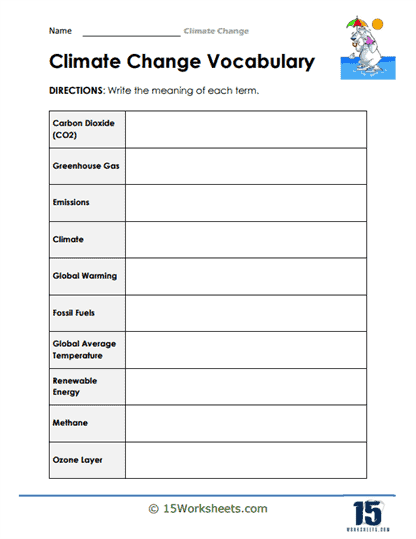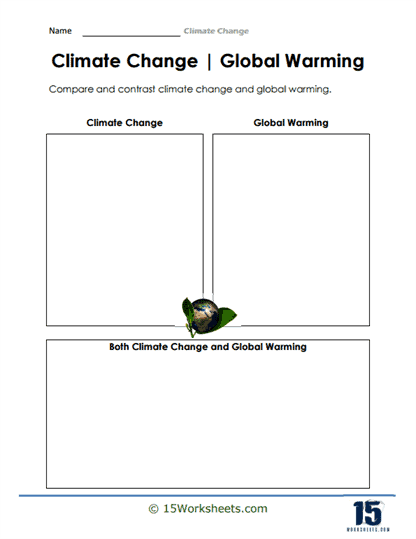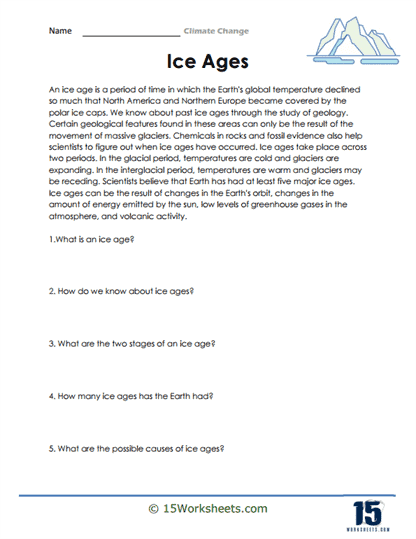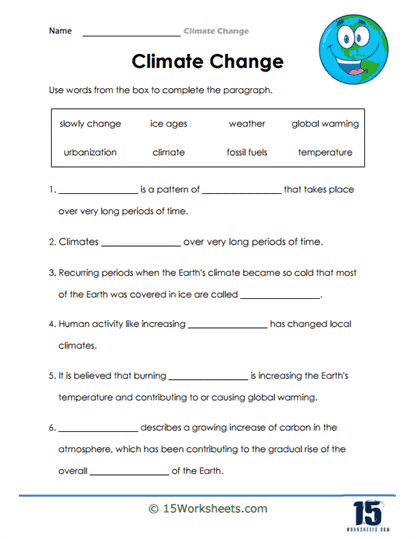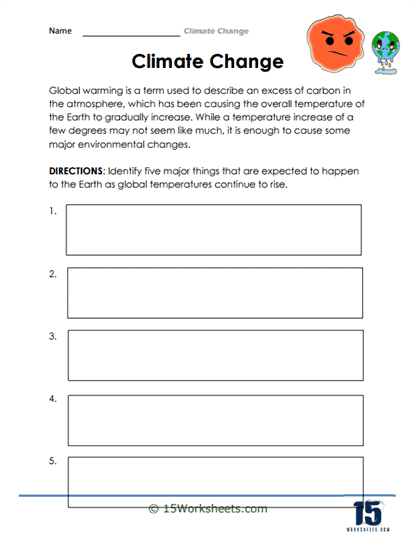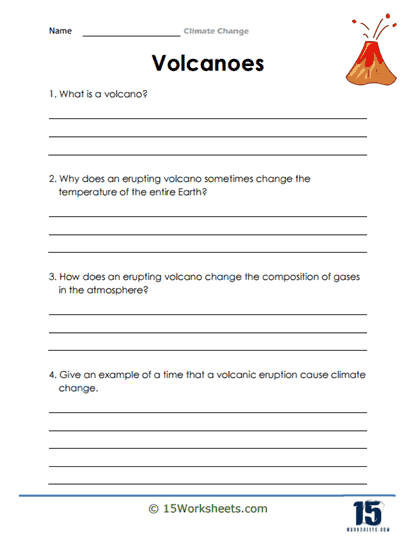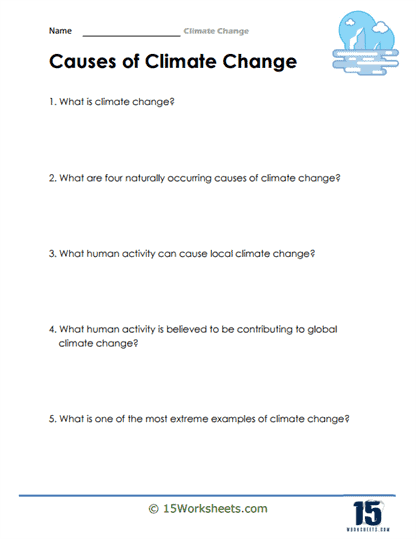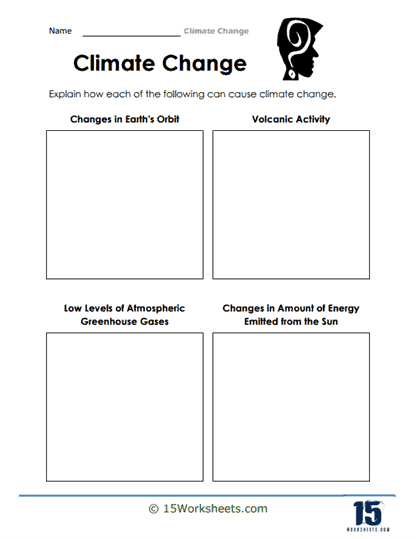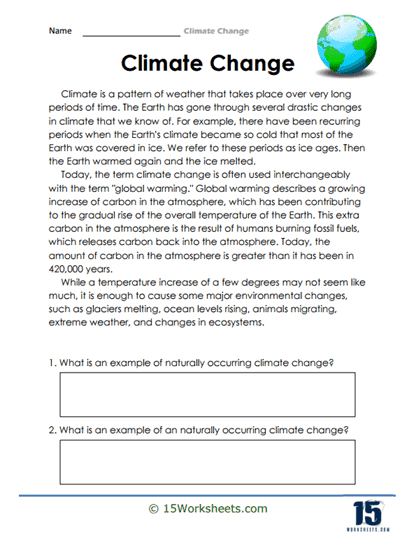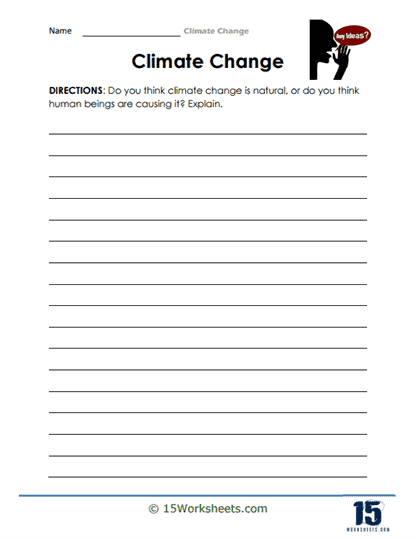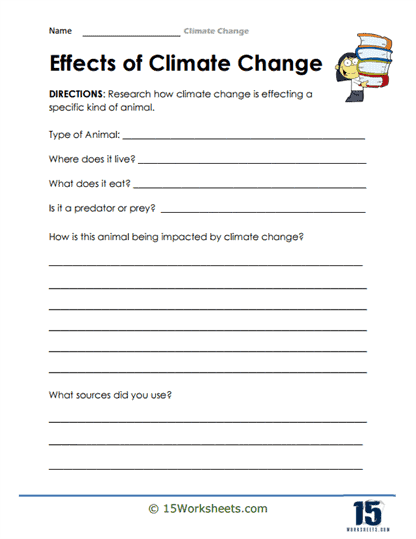Climate Change Worksheets
All About These 15 Worksheets
This collection of 15 worksheets focuses on helping students understand climate change and its impacts. The exercises cover a variety of topics related to climate change, including weather and climate, and the causes and effects of climate change.
Some worksheets ask students to define key terms related to the topic, such as greenhouse gases and emissions, while others require them to compare and contrast climate change and global warming. There are also exercises that ask students to read passages related to climate change and answer questions, write about potential effects of climate change, and research how it affects specific species of animals.
By engaging with these materials, students not only gain a comprehensive understanding of the science behind climate change but also develop critical thinking skills as they explore its socio-economic and environmental impacts. Furthermore, this collection equips students with the tools to become informed, responsible citizens who can contribute to the urgent collective effort to combat climate change and protect our planet for future generations.
Additionally, there are activities that encourage creativity and critical thinking, such as creating an infographic on climate change and sharing their own observations and opinions about the topic. These worksheets are designed to engage students in learning about climate change while developing their language skills and critical thinking abilities. They are suitable for students of different ages and levels of proficiency in English and can be used in a variety of educational settings.
What is Climate Change?
Climate change refers to a long-term shift in the average global climate, including changes in temperature, precipitation patterns, and other climate-related factors. The primary cause of climate change is the increasing concentration of greenhouse gases in the atmosphere, which traps heat and leads to a warming of the planet. The most significant greenhouse gas is carbon dioxide, which is primarily emitted by the burning of fossil fuels like coal, oil, and natural gas.
There is a wealth of evidence supporting the existence and causes of climate change, including:
- Rising temperatures – Global temperatures have risen by about 1 degree Celsius (1.8 degrees Fahrenheit) since the late 1800s, with much of that warming occurring in the last few decades.
- Melting glaciers and sea ice – Glaciers and sea ice have been melting at an accelerating rate in recent decades, which is a clear sign of rising temperatures.
- Rising sea levels – As glaciers and sea ice melt, sea levels are rising, putting coastal communities at risk.
- Increased frequency of extreme weather events – Heatwaves, droughts, hurricanes, and other extreme weather events are becoming more frequent and severe due to the warming of the planet.
- Changes in plant and animal behavior – Plants and animals are shifting their ranges and altering their behavior in response to changing climate conditions.
- Human activity – Human activities such as deforestation, agriculture, and transportation contribute to greenhouse gas emissions and have been shown to be major drivers of climate change. Human activities that increase greenhouse gas emissions are the primary cause of climate change. These activities include:
- Burning fossil fuels – The burning of fossil fuels such as coal, oil, and natural gas for energy is the largest source of greenhouse gas emissions. This includes emissions from power plants, transportation, and industry.
- Deforestation – Deforestation and other land-use changes contribute to greenhouse gas emissions by releasing carbon dioxide into the atmosphere.
- Agriculture – Agricultural activities such as livestock production and fertilizer use also contribute to greenhouse gas emissions, primarily in the form of methane and nitrous oxide.
- Industrial processes – Certain industrial processes such as cement production and chemical manufacturing release greenhouse gases into the atmosphere.
- Waste management – Landfills and waste treatment facilities release methane, a potent greenhouse gas, as organic waste decomposes.
- Transportation – Transportation, including cars, trucks, airplanes, and ships, is a major source of greenhouse gas emissions.
All of these activities contribute to the increase of greenhouse gases in the atmosphere, which trap heat and lead to a warming of the planet. Reducing greenhouse gas emissions from these activities is essential to mitigating the impacts of climate change.
Overall, the evidence strongly supports the existence of climate change and the need for urgent action to reduce greenhouse gas emissions and mitigate its impacts.

